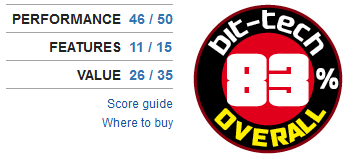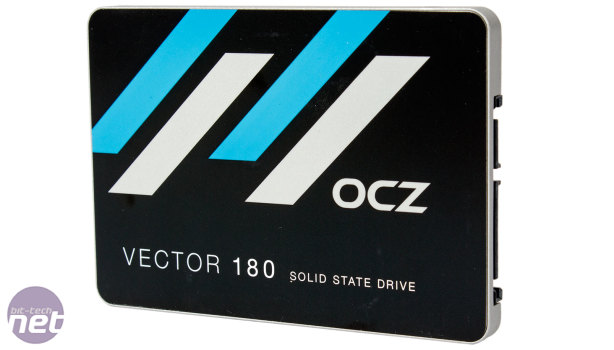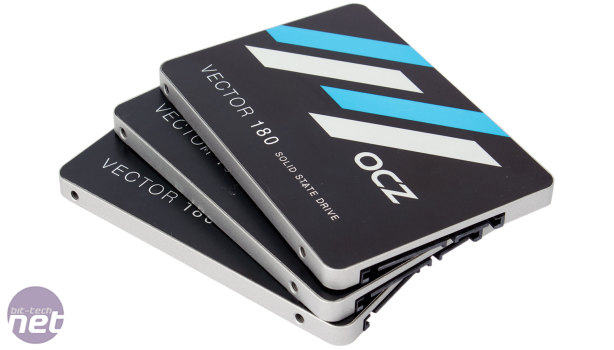OCZ Vector 180 Review (240GB, 480GB & 960GB)
March 24, 2015 | 19:55
Companies: #indilinx #ocz #ocz-storage-solutions #toshiba

Performance Analysis
With sequential read and write speeds at around 520MB/sec and 500MB/sec respectively in AS SSD, and slightly faster in CrystalDiskMark, the Vector 180 is, as expected, on par with most other modern SSDs in this regard. The 240GB drops to 490MB/sec reads in the latter test, but this is little cause for concern.Single queue depth random reads are not a strong point for Barefoot 3, but there's still some improvement for the Vector 180 over the Vector 150 with the new NAND in place. That said, no model manages to get above 30MB/sec in AS SSD, for example, leaving many other brands of SSDs ahead. Thankfully, single queue depth random writes are very much a strong point, with Barefoot 3 SSDs impressively occupying the top six spots in both the AS SSD and CrystalDiskMark charts, including all three Vector 180s tested.
Still, it's high queue depth workloads which are arguably more important for this class of SSD, and the Vector 180 holds its own well. Larger capacities do better in the read tests, though the 240GB model still does respectably, again showing a small gain over the Vector 150. Conversely, it's the 240GB model that does best with 32QD and 64QD random writes, joining the very similar AMD Radeon R7 SSD 240GB and Vector 150 240GB as a chart leader, though the differences between most drives here are fairly slim.
The PCMark 7 tests are not so favourable to the Vector 180, especially the 240GB one, which drops quite far down the rankings. In fact, moving from the 240GB to the 480GB nets an improvement of 25 percent (Starting Applications) and 17 percent (Gaming). The only real difference between these is controller saturation – the use of 64Gb NAND dies means the 240GB has four dies per channel, while the 480GB ups this to eight per channel. Usually, four is enough to provide saturation, but it seems there may be workloads where even this is still a limit for Barefoot 3. This would also explain why the older Vector 150 240GB is faster – it uses 32Gb dies, and thus has eight per channel.
Bootracer continues the theme of higher capacities being slower to boot into Windows 7, but otherwise the 240GB and 480GB models both perform pretty fast. The 960GB does appear to chug a little, but we only have figures for one other SSD in this capacity class.
The Mixed workloads tests allow the Barefoot 3 platform to shine, with the top parts of the first three graphs, which involves a battery of random read and write operations of varying file sizes, occupied by all three capacities. The drives also maintain decent read speeds after the succession of write operations, though the Samsung SSD 850 PRO is still faster in three of the four tests.
Finally, the Vector 180 has the best results so far in the consistency testing, with the highest average IOPS and lowest average response time after 12 hours of sustained writes. We only had time to test the 480GB model, but we know from the Radeon R7 SSD and Arc 100 results that Barefoot 3 excels here.
Conclusion
The Vector 180 is mainly just an update to bring OCZ's flagship series into line with the rest by giving it the latest generation of Toshiba NAND. As such, performance is mostly unchanged, although there are occasional differences, and its closest comparison is actually the AMD Radeon R7 SSD (same controller, NAND and cache, after all). However, the 960GB model is exclusive to the Vector 180, as is the PFM+ feature and the higher endurance rating: 50GB/day for five years up from 30GB/day in the AMD drive.For these three SSDs, the MSRPs supplied by OCZ undercut Samsung's SSD 850 PRO at each capacity level on cost per user-accessible gigabyte, and prices are likely to settle a little lower than this post-launch. With this tier of SSD, however, it's mostly about performance, features, and endurance; it's at the low-end where pricing is so crucial, since most SSDs are now “fast enough” for home use. If you're going to be hammering your drive with writes, the Vector 180 makes a pretty good case for itself; it may not be that fast in the PCMark 7 tests, but it excels in the intensive mixed workloads and consistency benchmarks, indicating that performance will stay high even when the drive is in a degraded state. The endurance is also high, and while it would be dishonest to say that there aren't still questions surrounding the longevity of its products, OCZ Storage Solutions is a different company to OCZ and is in a pretty strong position, and the no fuss ShieldPlus warranty is likely to give people an extra level of reassurance, though time is still needed to fully heal the wound of its turbulent past.
Taken as a whole, the SSD 850 PRO is still the best drive on the market – no other manufacturer can yet compete with what its 3D V-NAND offers in terms of performance and endurance, and it also supports lower power states and higher levels of encryption than the Vector 180, which we can't really recommend for mobile users or those with sensitive data to protect. However, if consistent performance over time is the most vital component for you, the Vector 180 could well be a wise choice, especially as it also offers a basic form of protection against power loss through PFM+, something which Samsung's consumer SSDs lack entirely.
OCZ Vector 180 240GB Score

OCZ Vector 180 480GB and 960GB Score

OCZ Vector 180 480GB and 960GB Score

MSI MPG Velox 100R Chassis Review
October 14 2021 | 15:04










Want to comment? Please log in.